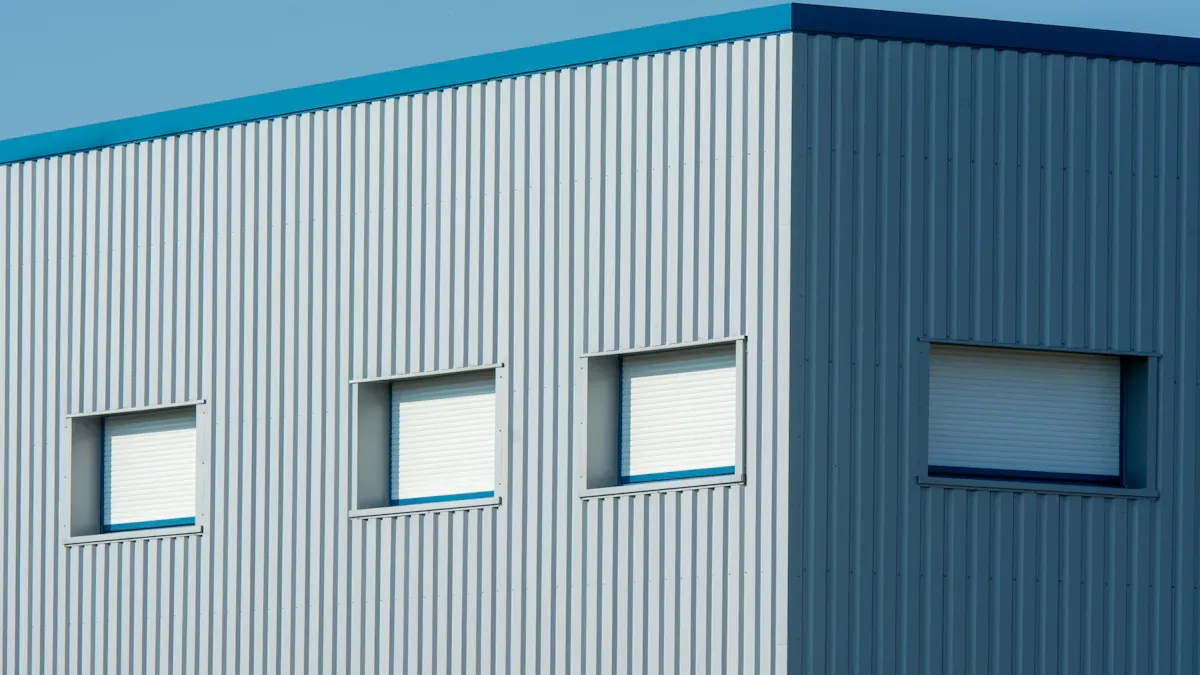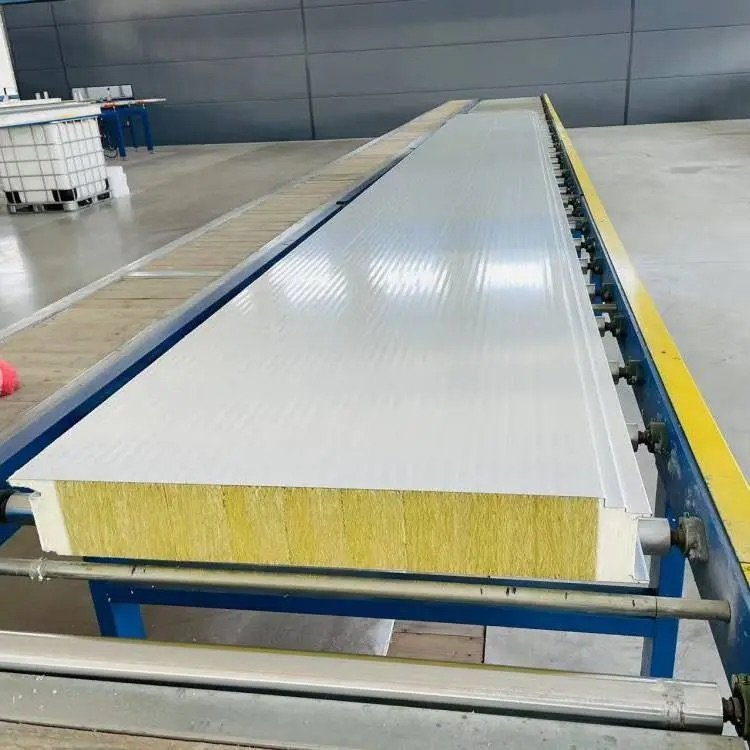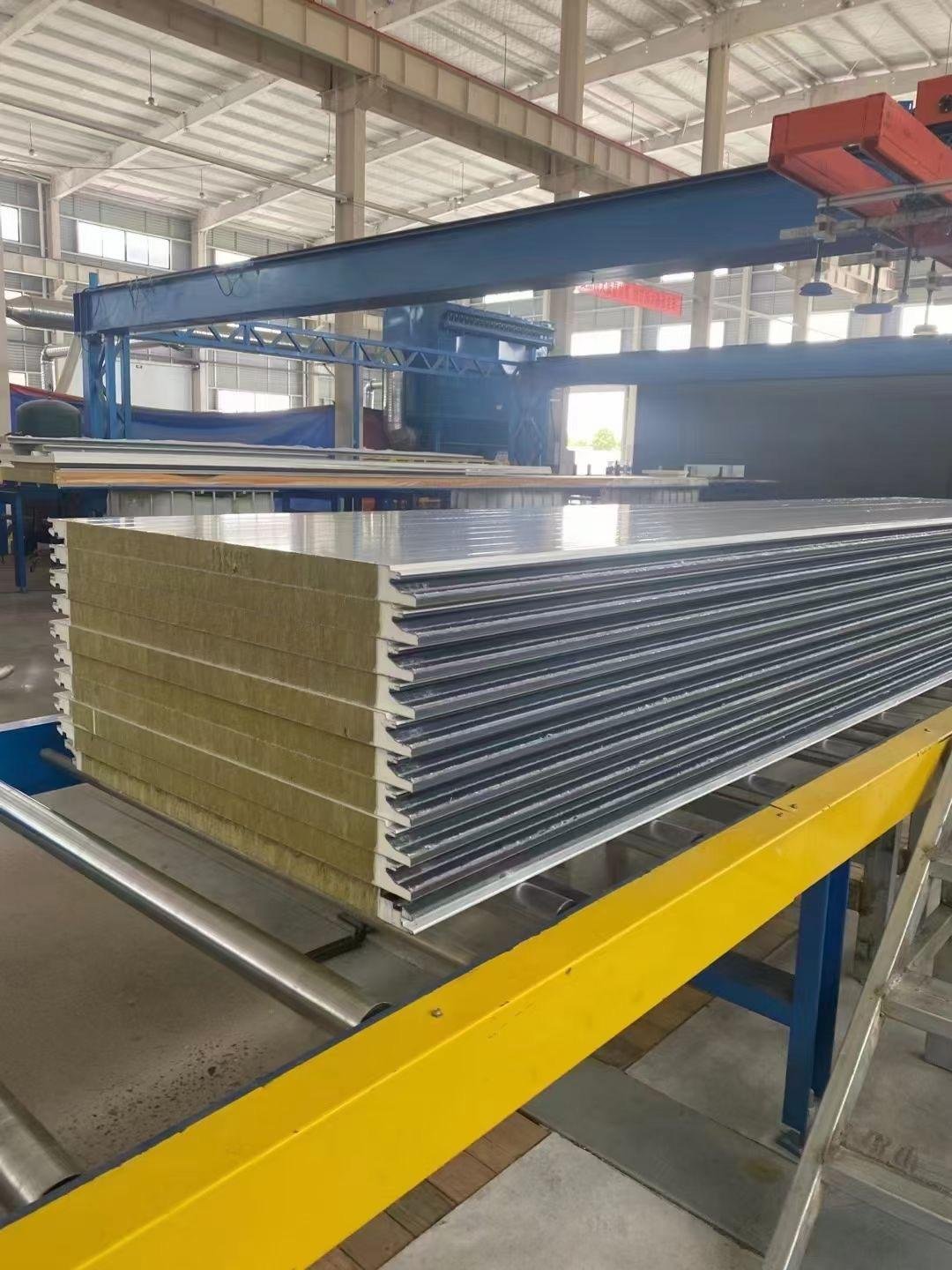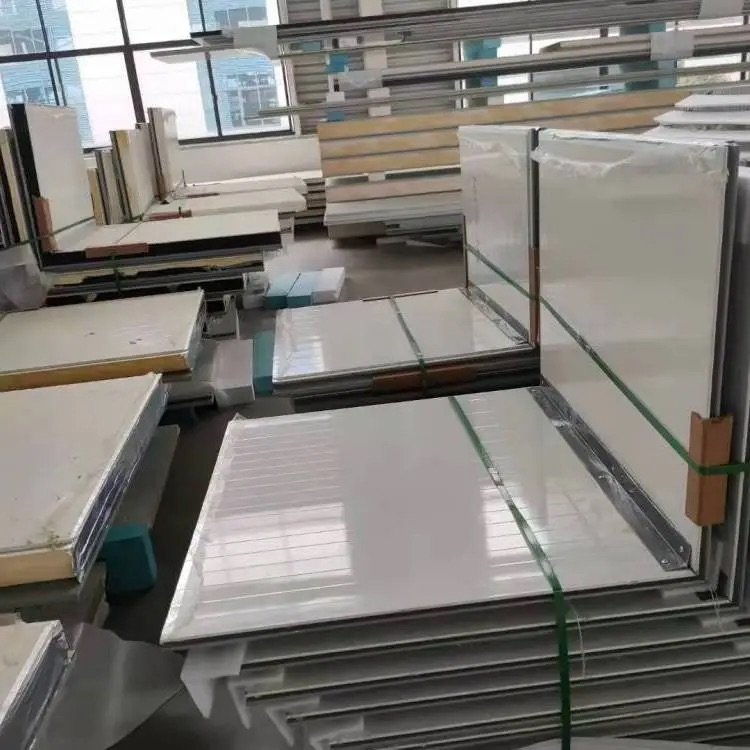
Fire safety is very important in building construction, particularly when considering the fire resistance of materials used. For instance, EPS sandwich panels are often utilized for insulation, but there are concerns regarding their fire resistance. In the UK, fires involving foam-filled panels doubled between 1997 and 1999, highlighting the importance of evaluating fire resistance in construction materials. By 1995, the food industry suffered losses exceeding 30 million Euros due to fires, underscoring the urgent need for safer materials that enhance fire resistance and reduce fire risks.
As awareness grows, more people are seeking better fire protection solutions. By 2025, the fire protection materials market is projected to reach $5.42 billion, with an expected annual growth rate of 8%. This trend reflects the increasing emphasis on fire safety and fire resistance to protect lives and property. Understanding how construction materials, such as EPS panels, perform in terms of fire resistance is crucial for creating safer buildings.
Key Takeaways
EPS sandwich panels keep heat out but need fire checks.
Flame retardants and coatings help make EPS panels safer in fires.
Thicker EPS panels melt slower, giving more time to escape fires.
Good installation and upkeep are key for fire safety in buildings.
Knowing fire rules helps pick safer materials for building projects.
Understanding EPS Sandwich Panels

Definition and Composition
EPS sandwich panels are light panels with insulation inside. They have an expanded polystyrene (EPS) foam core between two hard outer layers. These outer layers are usually made of steel, aluminum, or strong plastic. The EPS core keeps heat in and saves energy. The outer layers make the panels strong and long-lasting.
EPS insulation has tiny, closed cells that block water, air, and vapor. This design helps it last for at least 50 years without repairs. EPS foam is also tough, resisting damage, rot, and mold.
Characteristic | Description |
|---|---|
Lifespan | |
Durability | Strong against damage, rot, and rust; mold-resistant. |
Fire Resistance | Fire-resistant in some cases; needs extra protection. |
Water Impermeability | Blocks water, air, and vapor completely. |
Acoustic Insulation | Reduces sound by 34-52 dB; absorbs sound well (Alpha-w of 1.0). |
Density of EPS Core | Weighs 11-32 kg/m3; heavier cores are stronger. |
Thermal Insulation | Keeps heat in and saves energy for many years. |
Common Applications in Construction
EPS sandwich panels are used a lot in building projects. They are installed in walls, roofs, and ceilings of homes, offices, and factories. These panels are great for cold storage and food plants because they keep temperatures steady.
They are also used in prefab buildings and modular construction. Their light weight makes them easy to move and install, saving time and money. EPS panels are also found in temporary buildings like event halls and portable cabins, where quick setup is needed.
Benefits and Limitations
EPS sandwich panels have many good features. They keep buildings warm and quiet, making them energy-efficient and soundproof. Their light weight makes them easy to handle and install. They last a long time and don’t break down in sunlight. EPS foam also resists damage from acids and solvents.
But there are downsides too. These panels can catch fire and release harmful gases. Water can weaken them, and some chemicals can harm the EPS core. Recycling and disposing of EPS materials can also hurt the environment.
Benefits | Limitations |
|---|---|
Resists acids and solvents | Can weaken if exposed to water. |
Lasts long, doesn’t break down in sunlight | |
Great for sound and heat insulation | Can be damaged by certain chemicals. |
Lightweight and easy to use in construction | Hard to recycle and dispose of safely. |
Fire Resistance Characteristics of EPS Panels
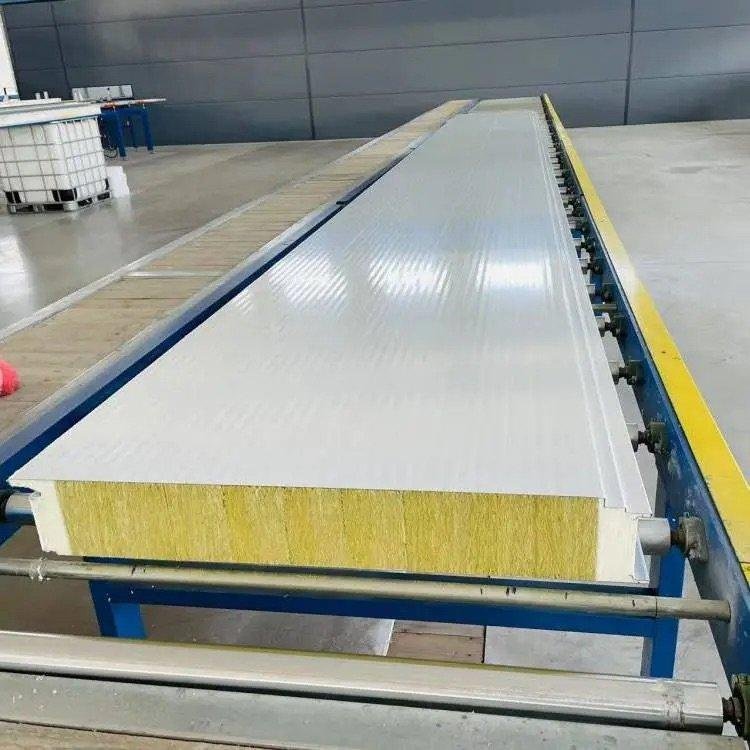
Combustibility and Flame Spread
EPS panels are light and insulate well, but they can burn. The EPS core melts before burning starts, making it unsafe in heat. Tests show EPS panels break apart above 250°C. In contrast, mineral wool panels last up to 350°C. This shows why knowing temperature limits is important.
Flame spread is also a big safety concern. Adding 20% expandable graphite and 25% fire retardants to EPS foam makes it safer. These changes lower the heat release rate by 62%. This improves how the material reacts to fire. Such upgrades help builders pick safer panels for projects.
Study Title | Key Findings |
|---|---|
Influence of fiberglass mesh on flammability of EPS used as insulation of buildings | Adding 20% expandable graphite and 25% fire retardants improved fire safety. Heat release rate dropped by 62% and 39% compared to untreated foam. |
Fire Behaviour of Insulation Panels Commonly Used in High-Rise Buildings | Tests showed how EPS and XPS burn under small to medium fire conditions. |
Expanded Polystyrene Fire Ratings
Fire ratings show how well EPS panels resist fire. Most EPS panels are rated fire class E, meaning basic fire resistance. Adding flame retardants can improve these ratings.
The thickness of EPS also affects fire safety. For example, 70 mm thick EPS melts fast above 250°C because its melting point is only 100°C. Thicker panels or using PIR insulation can make them safer. This proves design choices affect fire safety.
Role of Flame Retardants
Flame retardants make EPS panels safer in fires. They slow down burning and stop flames from spreading. Some panels have advanced flame retardants to meet stricter safety rules.
Expandable graphite is a common flame retardant. It creates a shield when heated, stopping the core from burning. Choosing panels with good flame retardants ensures better fire safety and meets safety standards.
Factors Affecting Fire Performance
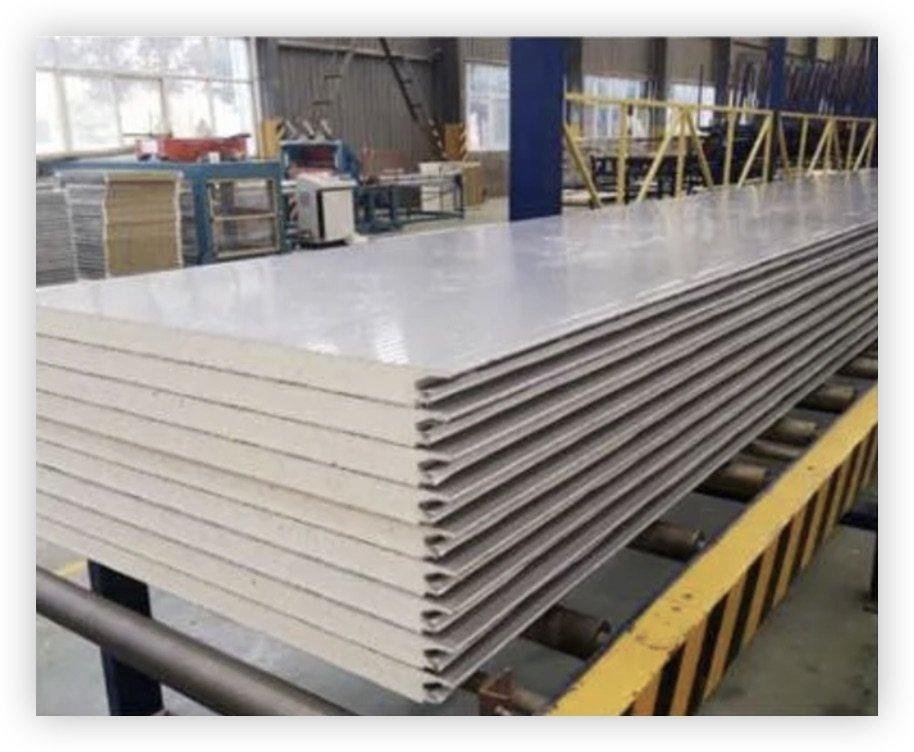
Material Composition and Additives
The materials and additives in EPS panels affect fire safety. Panels with fire-retardant additives burn slower and are safer. These additives help the panels stop burning on their own. This is important for meeting fire safety rules.
Adding fire-resistant materials like gypsum boards or special paints makes panels safer. This is very useful in tall buildings and busy places where fires are more dangerous. Studies show these upgrades lower risks and meet strict fire safety standards.
Environmental and Installation Conditions
The environment and how panels are installed impact fire safety. High heat, moisture, and chemicals can weaken panels and raise fire risks. Installing panels correctly helps them stay strong during a fire.
For example, panels in poorly ventilated areas can trap heat and catch fire faster. Panels in well-ventilated spaces stay cooler and are safer. Using non-burnable materials around EPS panels can also stop fires from spreading.
Design and Structural Modifications
The design and thickness of EPS panels affect fire resistance. Thicker panels melt slower, making them safer in fires. Studies show thickness changes fire reaction but not always overall safety.
Adding fireproof coatings or advanced methods can improve fire resistance. Tests and comparisons show these upgrades make panels safer. These ideas help choose designs that meet fire safety rules and lower fire risks.
Description | |
|---|---|
Sensitivity Analyses | Check how changes in materials affect fire safety. |
Statistical Comparisons | Compare test results to find differences in fire safety. |
Evaluations of Core Materials | Study how different core materials change fire safety. |
Fireproofing Methods | Test fireproofing techniques to see how well they work. |
Testing Methods and Fire Rating Requirements
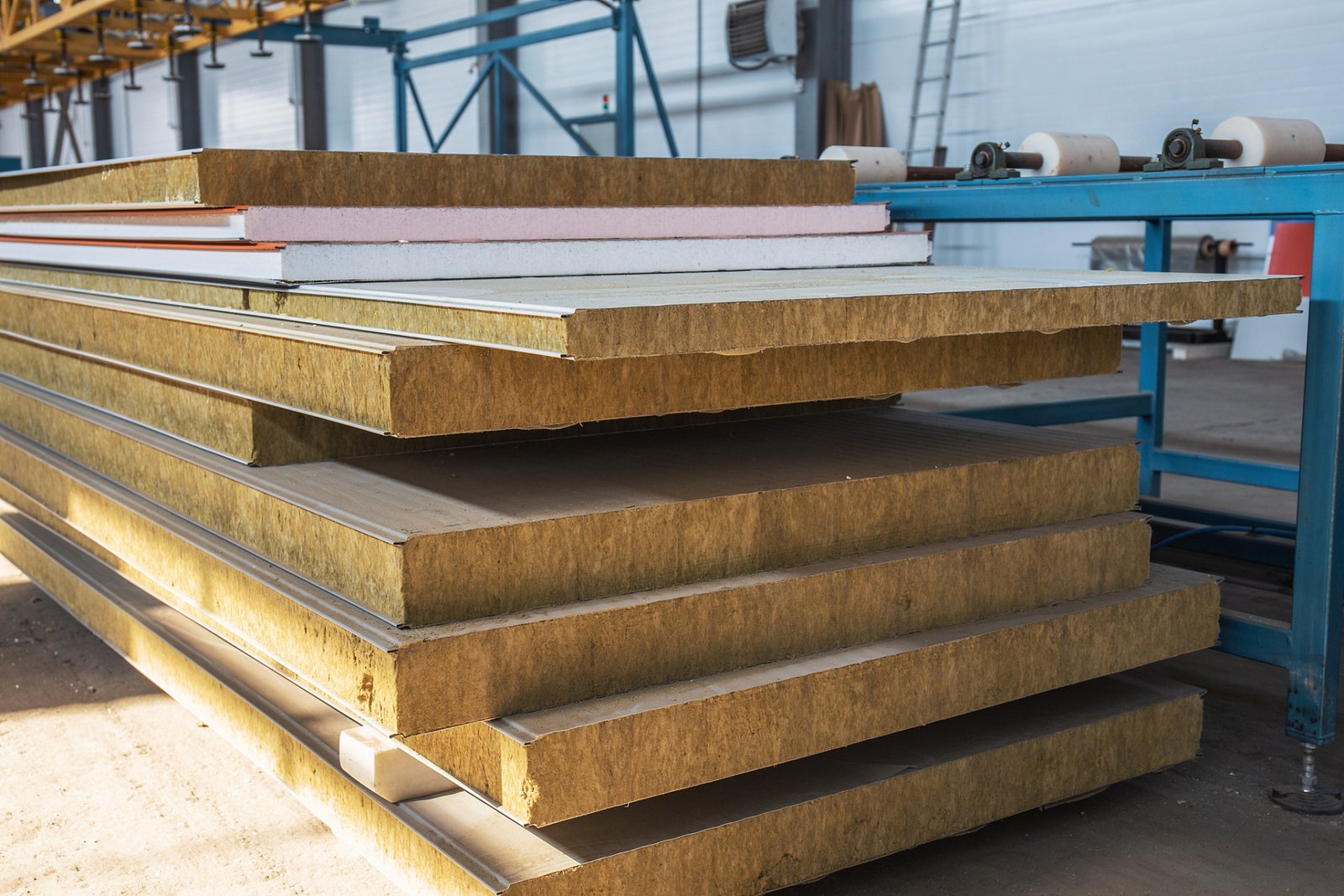
How Fire Resistance is Tested
It’s important to know how fire resistance is checked. These tests show if EPS panels are safe in fires. They measure how flames spread, smoke forms, and how well panels resist fire.
Here are some common testing standards:
Standard | Focus Area | Description |
|---|---|---|
Fire Safety | Rates materials from A1 (safe) to F (burns easily). | |
EN 13823 | Flame Spread & Smoke | Checks how flames spread and smoke forms. |
ASTM E84 | Flame Spread & Smoke | Tests flame spread and smoke in materials. |
NFPA 285 | Wall Fire Performance | Examines how walls react to fire. |
ISO 13784-1 | Flame Spread & Dripping | Looks at flame spread and falling burning pieces. |
EN 13823:2020 | Smoke Levels | Measures how much smoke materials produce. |
These tests make sure EPS panels meet fire safety rules. They also help lower fire risks in buildings.
Fire Rating Rules Around the World
Fire rating rules differ by region, but global standards help. Knowing these rules ensures materials are safe and meet requirements.
Standard | Region | Key Aspects |
|---|---|---|
Europe/UK | Rates fire reaction from A1 (safe) to F (unsafe). | |
BS 476 | UK | Tests how flames spread and how fire grows. |
ASTM E119 | USA | Checks how building parts resist fire. |
ISO 1182 | International | Tests if materials don’t burn easily. |
These rules explain how EPS panels act in fires. They also help you pick materials that follow fire safety laws.
Understanding Fire Rating Rules
Fire ratings show if materials are safe for certain uses. For EPS panels, they focus on not burning, flame spread, and staying strong in fires.
Material Type | Criteria for Noncombustibility | Testing Method |
|---|---|---|
Noncombustible | 1. Weight loss ≤ 50% and temperature ≤ 30°C above test tool temperature. | |
2. Weight loss > 50% and temperature ≤ test tool temperature, no flames at any time. | ||
Ignition-resistant | Must have low flame spread after wet-dry cycles. | Horizontal flame spread tunnel test |
Fire-resistant | Checks if it stops fire or stays strong during fire. | Large vertical furnace test |
Always check fire ratings for your project. Certified panels follow fire safety rules and make buildings safer.
Improving Fire Resistance of EPS Panels

Fire-Resistant Coatings and Treatments
Adding fire-resistant coatings makes EPS panels safer in fires. These coatings form a shield that slows down burning and stops flames from spreading. New treatments are now available to improve the fire safety of polystyrene panels. These are especially useful in risky places like kitchens or factories where fire safety is very important.
Studies show combining coatings with other materials works even better. For example, putting fiber cement siding over EPS panels stops flames from sticking, even in high heat. This method not only boosts fire safety but also meets modern fire rules.
Advanced Flame Retardants
Flame retardants are key to making EPS panels safer. Special additives can lower how easily these panels catch fire. Expandable graphite is a common choice because it creates a heat shield, stopping the core from burning.
Structural Insulated Panels (SIPs) with EPS cores show how flame retardants help. Their solid structure reduces air gaps, making it harder for fire to spread. This design is safer for homes and offices.
Design Strategies for Enhanced Fire Safety
Smart designs can make EPS panels more fire-resistant. Thicker panels melt slower, giving people more time to escape during a fire. Using non-burnable materials like mineral wool boards with EPS panels can also stop flames from spreading.
Research shows mixing materials carefully is important. For instance, vinyl siding with furring strips and mineral wool boards stops flames from sticking to walls. By using these design ideas, buildings can be safer and meet strict fire safety rules.
Regulatory Compliance and Fire Safety
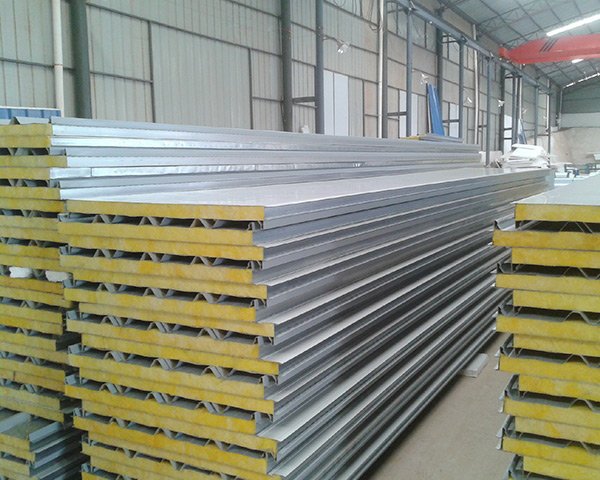
Key Rules for EPS Panels
Knowing the rules for EPS panels is important for fire safety. Different places have their own standards for how these panels should handle fire. For example, the EU Construction Products Regulation (CPR) requires strict fire tests for building materials. EPS panels with fire-resistant additives must meet Euroclass B-s1-d0 or better to be used in homes and businesses.
In Germany, DIN 4102-1 has tough fire safety rules. Over 60% of new factories now use improved EPS panels that follow this rule. In California, SB 1011 requires Class A fire-rated panels for public buildings. This rule has removed 40% of older EPS products from being allowed. The table below shows some key rules:
Rule/Standard | What It Does | Effect on EPS Panels |
|---|---|---|
EU Construction Products Regulation (CPR) | Requires strict fire tests for building materials | EPS panels with fire-resistant additives must meet Euroclass B-s1-d0 or better for homes/businesses |
DIN 4102-1 (Germany) | Tough fire safety rules | Over 60% of new factories use improved EPS panels that follow this rule |
EN 13501-1 (2023 update) | Fire rating standards | EPS cores had to be changed, delaying production |
California SB 1011 | Requires Class A fire-rated panels for public buildings | Removed 40% of older EPS products from being allowed |
Fire Ratings for Different Uses
Fire ratings depend on how EPS panels are used. Public buildings need panels with higher fire resistance to keep people safe during emergencies. Homes and offices may have less strict rules but still need to meet fire safety standards.
Structural insulated panels (SIPs) are a good example of fire-rated panels. These panels are made to resist fire and stop burning on their own. A tested SIP can last one hour in a fire, giving people time to escape. This level of safety is very important for meeting rules and keeping people safe in different buildings.
SIPs are built to resist fire and stop burning on their own. A tested SIP can last one hour in a fire, protecting people and meeting fire safety rules.
How to Follow Fire Safety Rules
To follow fire safety rules, you need to do a few things. First, pick EPS panels that meet the fire ratings needed for your project. Make sure the panels are tested and approved based on local rules.
Installing the panels correctly is also very important. If they are installed wrong, their fire resistance might not work. You can add extra safety by using fireproof coatings or layers that don’t burn. Regular checks and maintenance help make sure the panels stay safe over time.
By doing these steps, you can make sure your building projects follow fire safety rules and keep people safe.
Knowing how EPS sandwich panels resist fire is very important. These panels provide good insulation and are strong, but they must meet fire safety rules. Picking panels with the right fire ratings lowers risks and makes buildings safer.
Following fire safety rules and testing is crucial. Different regions have strict standards to ensure materials are safe. For example, North America uses NFPA 101, while Europe follows EN 13501-1. The table below shows how global rules improve safety:
Region | Regulation/Standard | How It Improves Safety |
|---|---|---|
North America | NFPA 101, NFPA 286, IBC, California’s Title 24 | Sets strong rules and requires full-scale tests after major fires, improving safety. |
Europe | Construction Products Regulation (CPR), EN 13501-1, UK Building Safety Act 2022 | Rates materials and adds third-party checks, ensuring safer materials. |
Asia-Pacific | China’s GB 8624-2012, Japan’s Building Standards Law, India’s NBC 2016 | Matches global standards and increases fire resistance testing. |
Middle East | Dubai’s Civil Defense Fire Code, Saudi Arabia’s SASO Fire Code 2018 | Tests high-rise facades together, solving unique safety problems. |
Australia/New Zealand | AS/NZS 1530 series standards, 2023 updates | Requires longer burn tests for mid-rise buildings, improving fire safety. |
Emerging Areas | Singapore’s SCDF, South Korea’s accelerated aging tests | Focuses on toxic fumes and material lifespan, encouraging safer designs. |
By using approved panels and following these rules, you can keep buildings safe and protect lives.
FAQ
What helps EPS panels resist fire?
EPS panels resist fire when treated with special chemicals or covered with fireproof layers. These treatments slow burning and stop flames from spreading, making them safer.
Can EPS panels be used in places with high fire risk?
Yes, but only if they follow strict fire safety rules. Panels with strong fireproof chemicals or extra protective layers work better in risky areas like kitchens or factories.
How is the fire resistance of EPS panels tested?
Fire tests check how safe EPS panels are. Standards like EN 13501-1 or ASTM E84 measure flame spread, smoke levels, and how long panels last in fire.
Are thicker EPS panels safer during a fire?
Thicker panels melt slower, giving more time in a fire. But thickness alone isn’t enough. Adding fireproof layers makes them safer.
Do EPS panels give off harmful gases in a fire?
Yes, untreated EPS panels can release bad gases when burned. Panels with fireproof chemicals or coatings make less toxic smoke, which is safer indoors.

